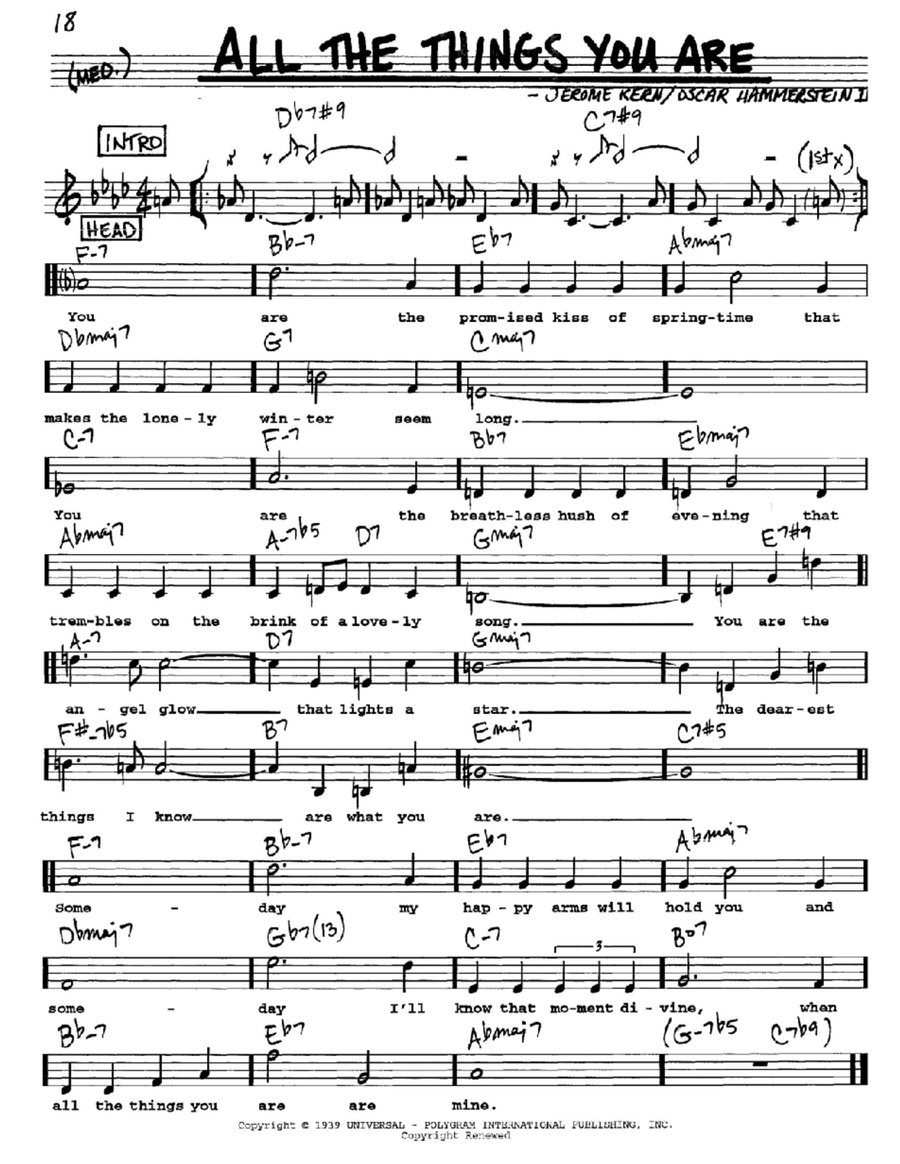Integrated Music Theory 2023-24
Discussion 3c - Leadsheet Notation
Leadsheet Loquacity
Why is Leadsheet notation important for our class?
- Leadsheet is an efficient system to classify a harmony without worrying about context. Usually, we fill out the leadsheet first before going back and filling out the Roman Numeral function.
“Why use both Roman Numeral analysis and Leadsheet?”
- Each system serves a different purpose. We use Leadsheet Notation for harmonic construction and we use Roman Numeral analysis for harmonic function.
“What is extended harmony?”
- Additional notes past our normal triads or 7th chords. Ex: G(add 9) is a G major triad with an A played on top.
- Sometimes it can get confusing when you notate extended harmony in short-hand. For example, whereas a G(add 9) means adding a 9th to a major triad, G9 means adding a 9th to a dominant seventh chord. G9 is the short-hand for G7 (add 9). So, be careful when you try to use short-hand for labeling extended harmony!
“What is the difference between an add 6 chord and an inverted minor seventh chord (Ex: C(add 6) and Am7/C?)?”
- Sure, they are spelled the same, but they have very different functions based off their contexts. This is where Roman Numeral analysis would be necessary to understand and explain the proper function of the chord.
Which note do we substitute out in a sub chord?
- Whatever is closest! Ex: C(sub 6) replaces the 5th with the 6th.
Leadsheet Notation Break-down:
- Leadsheet notation is a system of labeling chords based on the written notes. Unlike Roman Numeral analysis, leadsheet is unreliant on the key.
- Each chord should have the letter name, quality of chord, seventh notation (if needed), and inversion figure (if needed).
- ALL CHORD LABELS USE CAPITAL LETTERS, NOT JUST MAJOR CHORDS
- Labeling triads:
- Augmented: label “aug” or “+” after chord letter name
- Major: nothing extra after chord letter name
- Minor: “min”, “m”, or “-“
- Diminished: “dim”, “d”, or a superscript “o”
- Labeling seventh chords:
- Major seventh chord: write “maj7” after the letter, or “∆7”, or just “∆”
- Dominant seventh chord: superscript 7, nothing else
- Minor seventh chord: “min7”, “m7”, or “-7”
- Half-diminished seventh chord: “ø7”
- Fully-diminished seventh chord: “o7”
- Labeling inversions:
- To label inversions, put a diagonal slash after the chord symbol, then put the bass note under the slash. This is called a “slash chord”.
Example:

- Notice, leadsheet is written above the staff, and lyrics are written below the staff.
Further Reading
From Open Music Theory
Lead-sheet symbols
A triad can be summed up by a single symbol, such as a lead-sheet chord symbol. A lead sheet symbol includes information about both root quality, as well as which pitch class occurs in the lowest voice (called the bass regardless of who is singing or playing that pitch).
A lead-sheet symbol begins with a capital letter (and, if necessary, an accidental) denoting the root of the chord. That letter is followed by information about a chord’s quality:
- major triad: no quality symbol is added
- minor triad: lower-case “m”
- diminished triad: lower-case “dim” or a degree sign “°”
- augmented triad: lower-case “aug” or a plus sign “+”
Finally, if a pitch class other than the chord root is the lowest note in the chord, a slash is added, followed by a capital letter denoting the pitch class in the bass (lowest) voice.
A C-major triad’s lead-sheet symbol is simply C. A C-minor triad is Cm. A D-sharp-diminished triad with an F-sharp in the bass is D#dim/F#. And so on.
